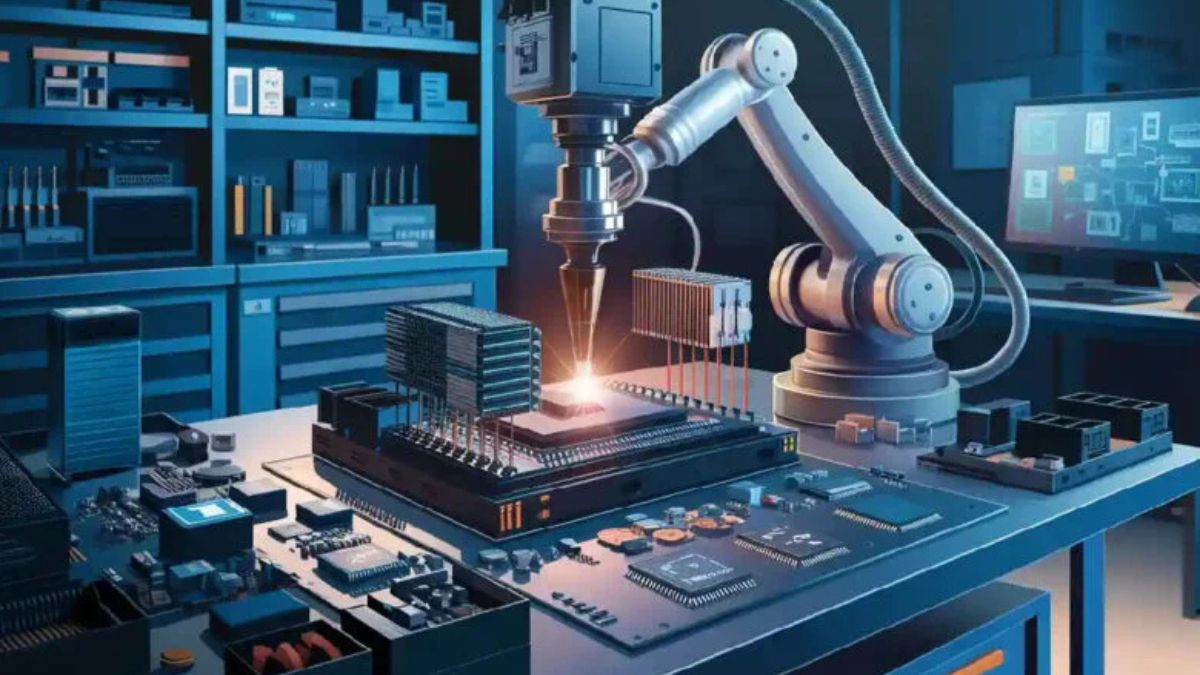Imagine a world where a cracked smartphone screen repairs itself in minutes. Where the sole of your favorite running shoe, worn thin from miles of pavement, gradually thickens back to its original form overnight. Where a chipped car bumper slowly, seamlessly, flows back into its perfect shape without a trip to the body shop.
Repmold (a portmanteau of “Replicate” and “Remold”) is a hypothetical class of self-healing smart materials. Unlike current self-healing polymers, which are often limited to repairing minor scratches or require specific external triggers like heat, Repmold envisions a more profound and autonomous capability.
The core idea is a material embedded with a synthetic, nano-scale “instruction set” and the means to carry it out. Think of it as a material with a perfect memory of its original, undamaged state and the ability to actively rebuild itself to match that blueprint.
While purely conceptual, Repmold would likely function through a multi-faceted approach:
- The Nano-Scale Network: The material would be laced with a vast network of nanoparticles or microcapsules. These aren’t just repair agents; they are sophisticated units containing raw material monomers, a power source (perhaps harvesting ambient energy), and a tiny processor.
- The Structural Blueprint: Each Repmold object would contain a digital map of its intended structure—a kind of “material DNA.” This blueprint is stored throughout the network, allowing any section to know what it should be.
- The Damage Assessment: Using micro-sensors, the material would constantly monitor its integrity. Upon detecting a breach, crack, or wear, the local network would assess the extent of the damage against the stored blueprint.
- The Rebuilding Process: Here’s the fascinating part. The nanoparticles would then work in concert, releasing raw materials and using energy to catalyze a rebuilding process. This could involve:
- Flow: Liquefying nearby stored material and guiding it to fill gaps.
- Replication: Using the surrounding undamaged area as a template to precisely reform broken molecular bonds.
- Curing: Solidifying the new material seamlessly into the existing structure.
The implications of Repmold technology would be nothing short of revolutionary across every industry:
- Consumer Electronics: Say goodbye to cracked screens and broken casings. Devices could become more durable and long-lasting, drastically reducing electronic waste.
- Automotive and Aerospace: Car bodies, airplane wings, and critical components could self-repair from minor impacts, stress fractures, and wear, leading to unprecedented levels of safety and longevity.
- Infrastructure: Bridges, roads, and buildings made with Repmold-enhanced concrete or alloys could continuously maintain their structural integrity, detecting and repairing stress cracks before they become catastrophic.
- Medicine: The most profound impact could be in biotech. Imagine prosthetic limbs that self-adjust for comfort, or biocompatible implants that repair themselves inside the body, eliminating the need for replacement surgeries.
- Sustainability: This is Repmold’s crown jewel. By creating products that last decades instead of years, we could fundamentally disrupt the “take-make-waste” economy and move towards a truly circular model where repair is automatic and built-in.
Of course, such a powerful technology comes with significant hurdles and questions:
- Energy Consumption: The process of breaking and forming molecular bonds is energy-intensive. Where would this energy come from? Could it be efficient enough to be practical?
- Material Limitations: Could a single material system be complex enough to replicate the intricate combination of plastics, metals, and glass found in a modern device?
- The Control Problem: How do you stop the repair? Would a Repmold object ever mistakenly “over-grow” or repair itself in an unwanted way?
- Economic Disruption: Industries built on manufacturing replacements, repairs, and maintenance would need to completely reinvent themselves.
- Security: If a material can be reprogrammed, could a “Repmold virus” be used to deform critical infrastructure or products?
Repmold remains firmly in the realm of science fiction, a compelling thought experiment that pushes the boundaries of materials science, nanotechnology, and AI. However, it serves as a crucial North Star for researchers in the field of self-healing materials.
Each incremental advance—a plastic that heals itself under UV light, a concrete that seals its own cracks with bacteria—is a step toward the Repmold ideal. It challenges us to think bigger: not just to create things that are less breakable, but to create a world where breaking is merely a temporary state, soon to be followed by a silent, effortless return to wholeness.

